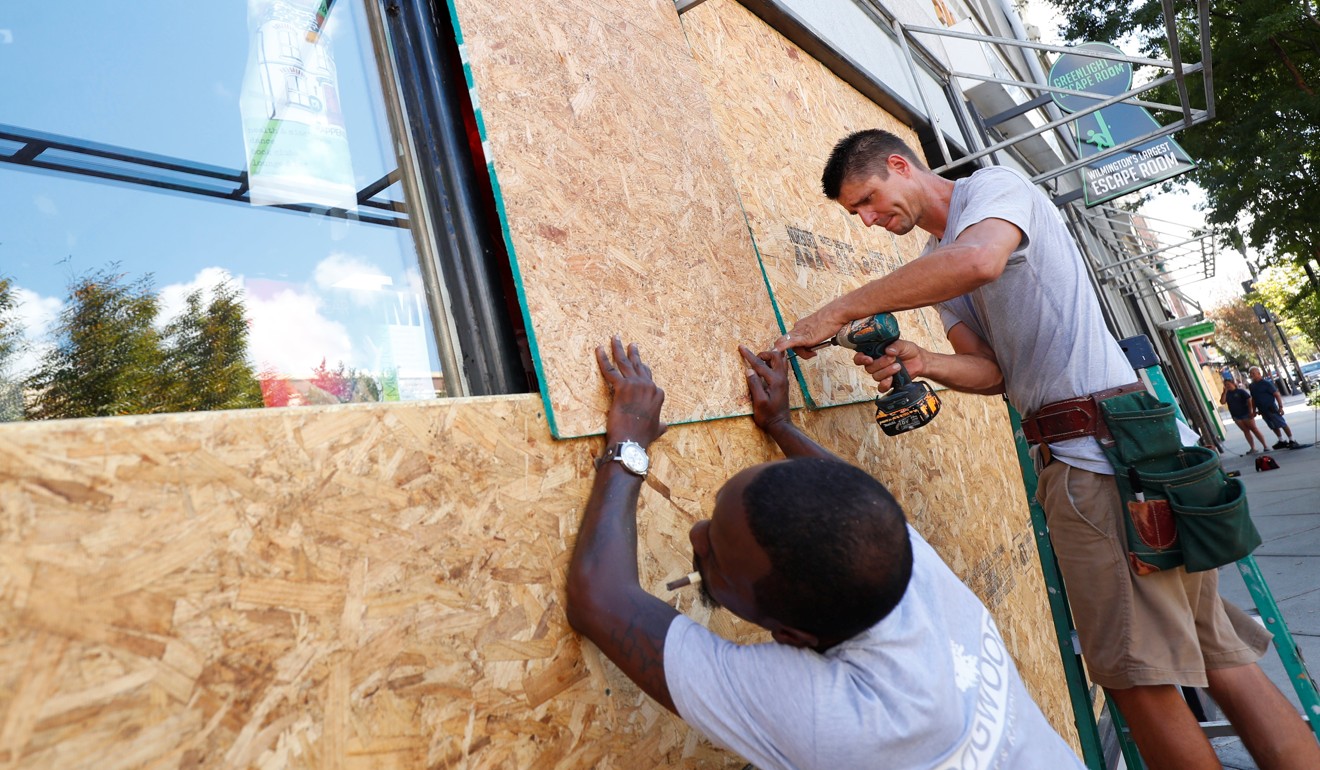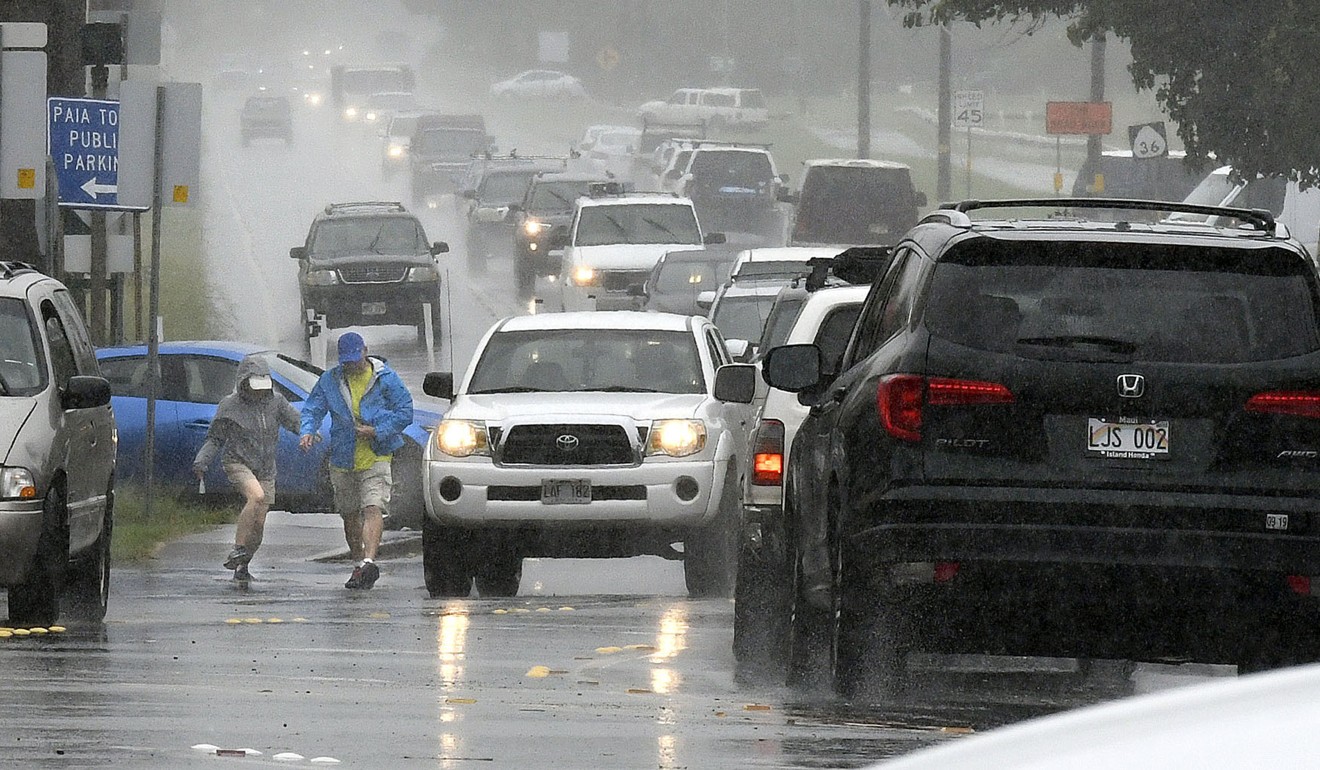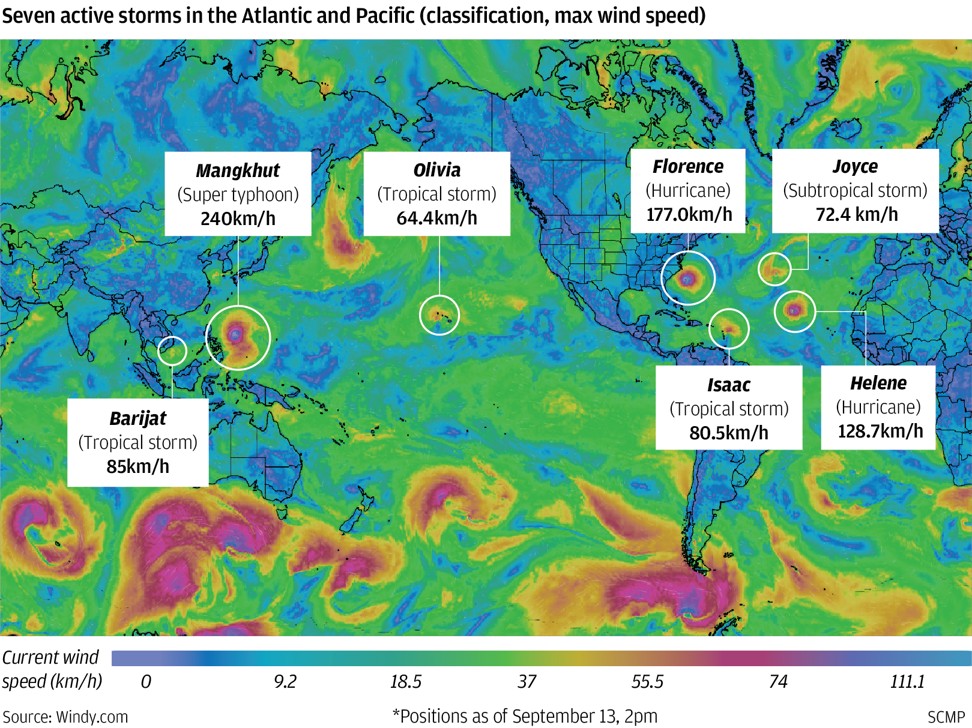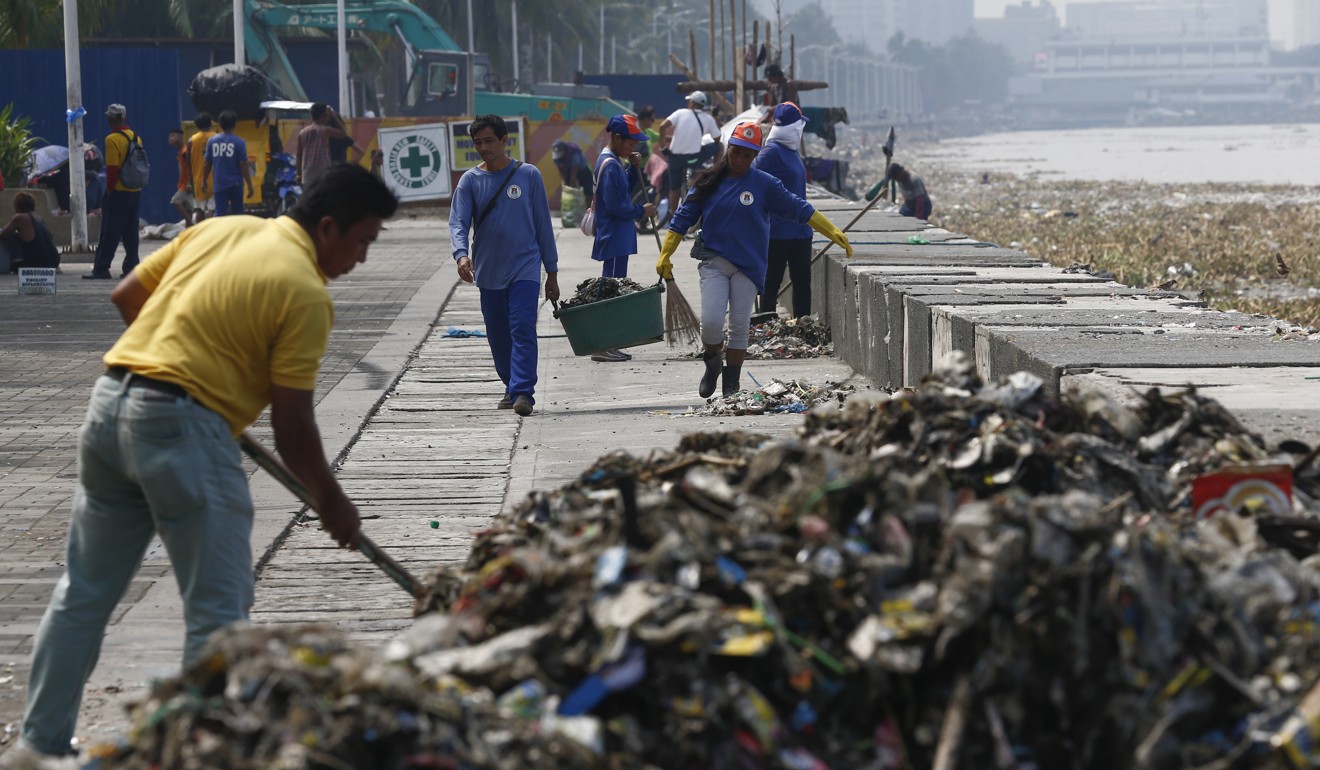
Super Typhoon Mangkhut and six other storms threatening chaos around the world – from Hurricane Florence to Tropical Storm Olivia
While some experts say global warming causing more storms, two from Hong Kong say there are many other factors to consider
On Thursday, the Hong Kong Observatory cancelled all cyclone warnings as Tropical Storm Barijat moved towards the vicinity of Leizhou Peninsula, in the southern part of China.
Tropical Storm Olivia, packing winds of 45 miles per hour, hit Hawaii, toppling trees and causing flights to be cancelled.

Another tropical storm, Isaac, was moving towards the central Lesser Antilles Island in the Caribbean Sea and could bring flash flooding.
Hurricane Helene was weakening as Subtropical Storm Joyce was forming in the north Atlantic Ocean and was expected to transform into a tropical storm.
While some experts said global warming was causing more frequent storms, two Hong Kong experts said there were many other factors that cause a typhoon to form aside from warm water current.

Leung Wing-mo, formerly an assistant director at the Observatory, said the direction of air current would also determine whether a storm would form. Scientific research has shown there would be fewer storms in the South Pacific Ocean but more in the Atlantic Ocean, he said.
“But it’s hard to forecast whether Hong Kong will be hit by more typhoons. There are too many uncertainties. Hong Kong is just a tiny dot on the map,” Leung said.
While having seven storms at the same time was “quite a lot”, Leung said it was not uncommon and he was not surprised.
“Even if there is a relation between [global warming and typhoon], it is not an equation like X causes Y,” Fong said.

The fearsome Mangkhut, named after the Thai word for mangosteen fruit, was equivalent to a Category 5 Atlantic hurricane. The city’s forecaster warned the weather on Sunday would “deteriorate significantly with frequent heavy rain and squalls”, and that seas would be “very rough”.
Hong Kong’s government convened an interdepartmental meeting on Wednesday, chaired by the security minister, to discuss contingency measures and ensure the city was prepared.

Mangkhut was expected to hit the northern Cagayan province of the Philippines on Saturday. Officials had already ordered the evacuation of thousands of people there, as well as the closure of schools, offices and businesses.
For Hurricane Florence, it was growing in size despite its weakening winds. It crept closer to the US East Coast as disaster response teams expanded south from the Carolinas into Georgia to counter the threat of deadly high seas and calamitous floods.

The centre of Florence was no longer classified a major hurricane but still posed a grave threat to life and property. It was expected to hit North Carolina’s southern coast on Friday US time.
He expected tens of thousands of homes and businesses to be flooded in North Carolina alone.
In Hawaii, Maui Mayor Alan Arakawa said of the weakening Tropical Storm Olivia: “It’s been an ordeal but we’re coming through this fairly well. I’m not seeing any really large areas of damage, no homes destroyed or flooded to any kind of extreme measures as we did in previous storms.”
Five of the biggest typhoons to hit Asia
Tropical Storm Isaac was moving towards the central Lesser Antilles Island in the Caribbean Sea, the National Hurricane Centre in the US said. The wind speed was weakening but the centre warned Isaac may cause life-threatening flash flooding.
“Swells generated by Isaac are affecting portions of the Lesser Antilles. These swells are likely to cause life-threatening surf and rip current conditions,” the centre said.
Hurricane Helene was weakening in the Atlantic Ocean, as it headed towards Britain and Ireland.
Additional reporting by Reuters and Associated Press

